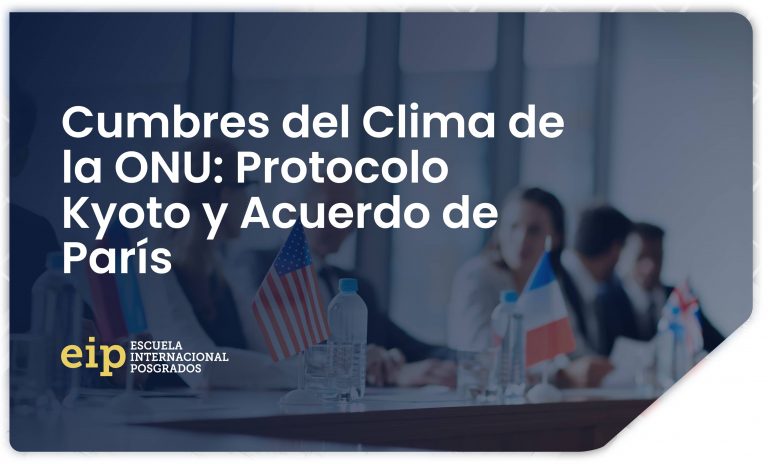These days the COP 26 Climate Summit that is taking place in Glasgow is making headlines in the media. This international meeting dIt should serve to track and unite goals in the fight against global warming of the planet.
The Secretary-General of the United Nations, António Guterres, at the opening of this Conference stated with the phrase “We are digging our own grave”, the current difficult situation of the planet in reference to the use of fossil fuels that threaten to take humanity towards a precipice, due to the unsustainable global warming produced by their consumption.
In the late 1980s and early 1990s, a certain consensus on climate change began to emerge in the international scientific community.
The United Nations decided to create the IPCC (Intergovernmental Panel on Climate Change) in 1988. This organization's mission is to analyze all the scientific, socioeconomic and technical information available on climate change. It obtains information from hundreds of experts around the world and then produces objective reports. The authorities with decision-making power rely on these reports and publications to determine the actions to be developed. The first IPCC assessment report was published in 1990. As a result of the conclusions and projections obtained in this report, the United Nations decided to create the Framework Convention on Climate Change (UNFCCC).
The United Nations Framework Convention on Climate Change
The UNFCCC was adopted in New York on May 9, 1992 and established that the greenhouse gases emitted by humans in their daily activities are contributing to climate change. The convention also established that the signatory countries must reduce these gases.
The fundamental objective of the Convention is to stabilize greenhouse gas concentrations "at a level that would prevent dangerous anthropogenic (human-induced) interference with the climate system."This level must be reached within a timeframe sufficient to allow ecosystems to adapt naturally to climate change, to ensure that food production is not threatened, and to allow economic development to proceed sustainably.”
Climate Summits (COP)
To develop the UNFCCC treaty, annual meetings are held, called Conference between the Parties (COP-Conference of Parties), in which delegates and ministers from 195 countries around the world participate. The first COP took place in Berlin in 1995 and the 26th should have been held in Glasgow in 2020. but the pandemic forced it to be postponed for 12 months. The last COP, in 2019, was in Madrid.
In a COP the situation of climate change is analyzed and evaluated. The COP is the supreme body of the United Nations Convention on Climate Change; that is to say, its highest authority with decision-making capacity.
In 1997, the delegates of the Parties, met in Kyoto, Japan, (COP3), where a Protocol which committed developed countries and countries in transition towards a market economy to achieve quantified emissions reduction targets. These countries, known within the UNFCCC as Annex I Parties, committed to reducing their total GHG (Greenhouse Gas) emissions by an average of 5.2% below 1990 levels, during the period 2008-2012. (first period of commitment), and with specific objectives for each country. The Kyoto Protocol entered into force in 2005 with 192 States Parties.
The result of the Copenhagen Conference (COP15) held in December 2009 was a “Political Agreement”, non-binding, whose objective was to limit the increase in the average temperature of the earth to 2ºC with respect to the average of the pre-industrial era, but it did not establish reductions in GHG emissions and did not specify the necessary budget for developing countries.
In 2010 in Cancun, Mexico (COP 16), An attempt was made to reach a binding agreement so that the average temperature of the planet did not exceed 2ºC. pre-industrial levels, given that this was the limit set by scientists so that climate change did not generate the disappearance of islands due to rising sea levels, the extinction of species and impacts on agriculture in many countries, among other consequences. A binding agreement was not reached, but the unilateral commitment to reduce emissions at the international level was reinforced.
During COP 18, held in 2012, the extension of the Kyoto Protocol was agreed for eight more years, until 2020 through the agreement called ”Doha Climate Gate”.
France was the host of the 2015 COP21 . The Paris Agreement established a global framework to combat climate change starting in 2020. This is a historic agreement to combat climate change, which promotes a transition towards a low-emissions economy that is resilient to climate change.
The Paris Agreement
The Paris Agreement is a international treaty about climate change legally binding. It was adopted by 196 Parties at COP21 in Paris on December 12, 2015 and entered into force on November 4, 2016, after the condition of ratification by at least 55 countries representing at least 55 % of global greenhouse gas emissions. All countries of the European Union have ratified the Agreement.
Your goal is limit global warming to well below 2, preferably at 1.5 degrees Celsius, compared to pre-industrial levels.
The Paris Agreement is a milestone in the multilateral climate change process because, for the first time, a binding agreement makes all the countries come together in common cause to undertake ambitious efforts to combat climate change and adapt to its effects.
The implementation of the Paris Agreement requires a transformation economic and social, based on the best science available. The Paris Agreement works in a cycle five years of increasingly ambitious climate measures carried out by countries. In 2020, countries presented their climate action plans known as nationally determined contributions (NDC). Countries communicate the measures they will take to reduce their greenhouse gas emissions in order to achieve the goals of the Paris Agreement. Countries also communicate in these contributions the actions they will take to build resilience and adapt to the effects of rising temperatures.
Starting in 2024, countries will report transparently on actions taken and progress made on climate change mitigation, adaptation measures and support provided or received.
What has been achieved?
Although climate change measures need to be greatly increased to achieve the goals of the Paris Agreement, the years since its entry into force have already led to solutions with low carbon emissions and new markets. More and more countries, regions, cities and companies are setting goals for carbon neutrality. The solutions of zero emissions They are becoming competitive in all economic sectors and already represent 25% of emissions. This trend is more noticeable in the sectors of energy and the transport, and has created many new business opportunities for those who come forward.
By 2030, net-zero carbon solutions could be competitive in sectors that represent more than 70 % of global emissions.
What Agreements could be expected at the Glasgow Summit?
The G20 meeting, prior to the COP, fIt ended with the agreement to limit the temperature increase to 1.5 degrees, compared to 2 degrees, and support the transition from coal, although without specific commitments.
More than 70 countries are going to commit in Glasgow to reduce methane emissions by 30 % in 2030 (relative to the 1990 level), although such important emitters as China, India or Russia do not participate in the commitment.
Likewise, it is sought that a large number of countries commit to abandoning coal to generate electricity. Or to stop producing combustion cars in 2035.
In addition, the promise to dedicate $100 billion annually to the fight against climate change should be fulfilled.
Who are the main greenhouse gas emitting countries?
According to the Rhodium Group analyst group, China is the main emitter and accumulated in 2019 27% of all greenhouse gases expelled by human activity. They are followed by: the United States (11%), India (6.6%) and the European Union (6.4%). But if you look at accumulated emissions, the United States remains the country that has historically contributed the most to global warming.
The European Union Model of the Fight against Climate Change
The European Union (EU) is a world leader in the fight against climate change and works to be a reference in terms of ecological transition, proposing solutions and measures to transmit to the rest of the planet to promote joint and global action to stop change. climate. To achieve the objectives, the European Union has set the goal of reduce greenhouse gas emissions by 35 % in 2030 compared to 1990 emissions (and between 80% and 95% greenhouse gas emissions by 2050).
Sources:
United Nations website - Paris Agreement
United Nations website - Kyoto Protocol
European Union website on Climate Change
Government of Spain website. Health and Climate Change Observatory
IPCC Fifth Assessment Report: Climate change 2013-2014
El País article “COP26: the 11 keys to the Glasgow climate summit”




































